Introduction by David: We have been excitedly following the progress of preparing the first Boeing 727 for its final flight. We took a look at it being painted, got an update with the JT8D engines, and even did a tour of the cabin. I have been very impressed with how many other people are also excited about the aircraft. More people have emailed me directly to share their own personal stories of the 727, which I have loved.
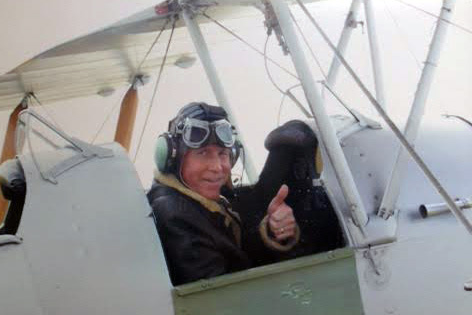
Captain Powell doing a few circuits & bumps in the Tigermoth on a visit to Duxford – Photo: Tim Powell
One person that reached out was Captain Tim Powell. Not only does he currently fly the 727 (you read that right), but he also is set to be one of the pilots who will fly the final flight of the 727. I welcomed him to share some of his thoughts about his experience and being an AvGeek in the left seat…
- First 727’s inaugural flight – Photo: Boeing
- Preparing for the first 727’s final flight
- Flight crew for first flight – Photo: Boeing
Story, told by Captain Tim Powell: I have been an AvGeek for as long as I can remember. I was the 10-year-old kid standing outside the airport fence watching airplanes taxi by, hoping that maybe someday someone would ask me to go up for a flight. They NEVER did.
When I got the opportunity to attend Parks College of Aeronautical Technology of St. Louis University (the oldest aviation school in the country) I was thrilled to be finally getting into aviation.
While earning an undergraduate degree in Aeronautics, I taught guitar lessons at a local music store and sold women’s shoes to finally start taking flying lessons. I distinctly remember walking down the railroad tracks in Cahokia, Illinois to Parks Bi-State Airport to try and master the venerable J-3 Cub. I did eventually earn my Private, Commercial, and Flight Instructor ratings before graduation.
After graduation I was offered a position with The Boeing Company in Flight Crew Training, teaching customer airline crews 707/727 systems and operating procedures. Marvin (Schully) Schulenberger, the Chief Flight Engineer at Boeing at that time (1970), saw to it that I got rated as a Flight Engineer on the 727.
1971 was the year that they wrote “Will the last person leaving Seattle turn out the lights,’ due to the large downturn at Boeing. I left the aerospace company in 1971 and accepted a position as a 707 First Officer with one of their customers: Royal Jordanian Airlines.
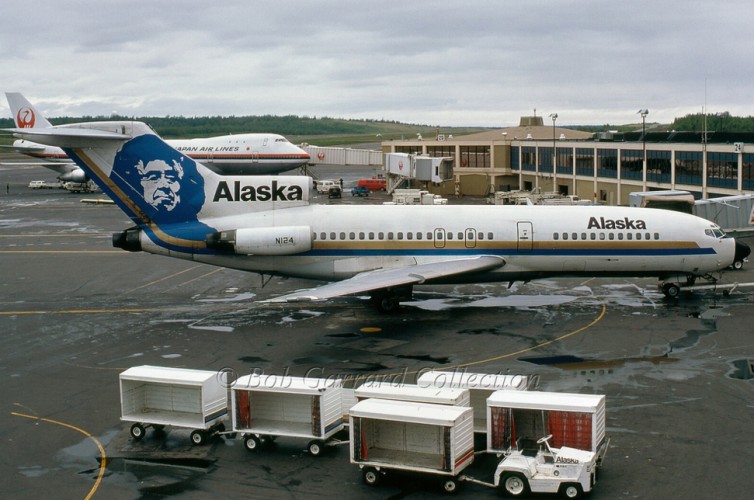
An Alaska Airlines Boeing 727 – Photo: Bob Garrard Collection
My airline career spanned 34 years, which included: Royal Jordanian (B707), North Central Airlines (CV-580), Airclub International/AeroAmerica (B707/720), Alaska Airlines (B727), Bangaladesh Biman Airlines (B707), Egyptair (B707), South Pacific Island Airways (B707) and finally 28 years at Western/Delta Air Lines (B727, B737, MD-80, B757, and B767) from which I retired in 2005.
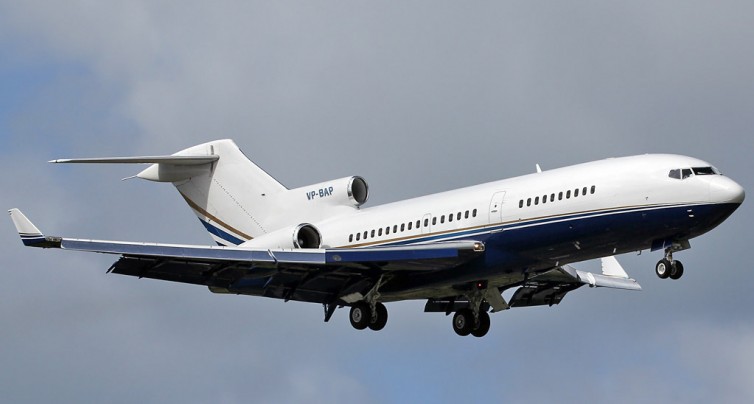
Boeing 727-100, VP-BAP, the VIP aircraft that Capt. Powell flies – Photo: Angel Moreno
For the past 10 years since my retirement, I have been flying Corporate/VIP Boeing 727s in international worldwide operations. I have also helped companies test and take delivery of 727, 757 and 767s. I even returned to Boeing/Alteon (flight crew training) for a short stint as a 777 instructor. Then I was offered a position as a VIP Boeing 727 pilot and I couldn’t turn down returning to the sky as opposed to the simulator. The 727 has always been one of my favorite aircraft, and I feel privileged to be still flying it.
The upcoming delivery flight of the first 727 (E-1), to the Museum of Flight’s main location at Boeing Field, will be a very special occasion. As an AvGeek, a pilot, and someone who still flies the 727, it is extremely exciting.
- Flight deck of the first 727 in 2015
- The engineering station in the flight deck of the first 727
- Close up of the first Boeing 727 cockpit
However, it is hard for me to explain in words how honored I am to be the guy chosen to be in the left seat during the first Boeing 727’s last flight.
I checked out originally on the second 727, in 1970 at Boeing. I knew Lew Wallick and Schully Schullenberger, the original flight test crew, so it is really a special honor for me after almost 50 years to do this last flight.
For my part, I plan to dedicate the flight to Lew Wallick, Dick Loesch, and Schully Schullenberger, the United Airlines pilots that flew the airplane thru the years. Also to Bob Bogash, T.C Howard, and all the dedicated people at the Museum of Flight that made it possible.
Even today, whenever an airplane flies over, I still have to look up… and hope I always do.
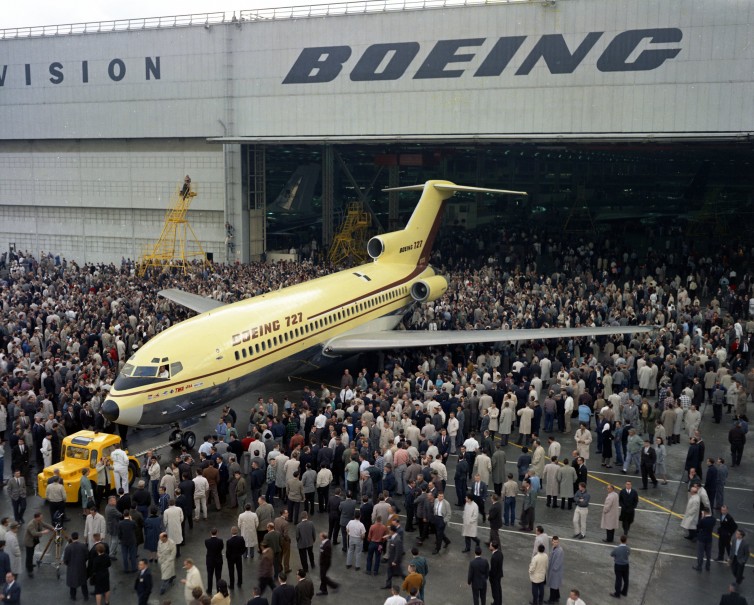
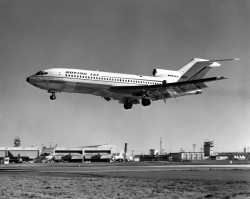
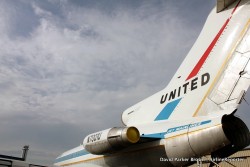
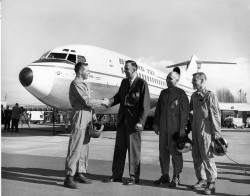
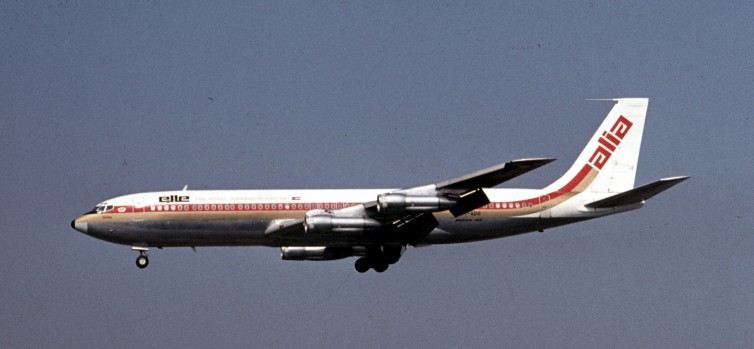
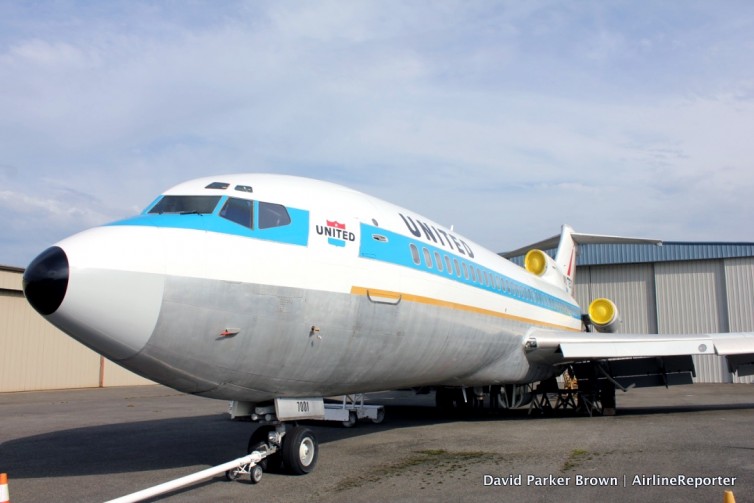
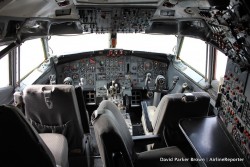
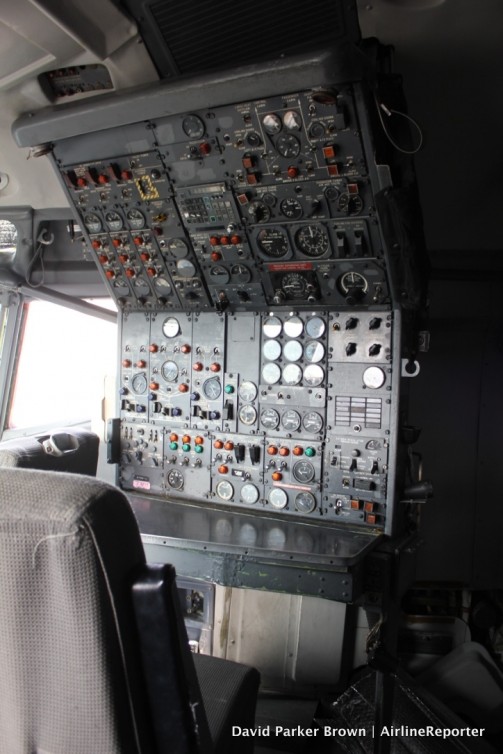
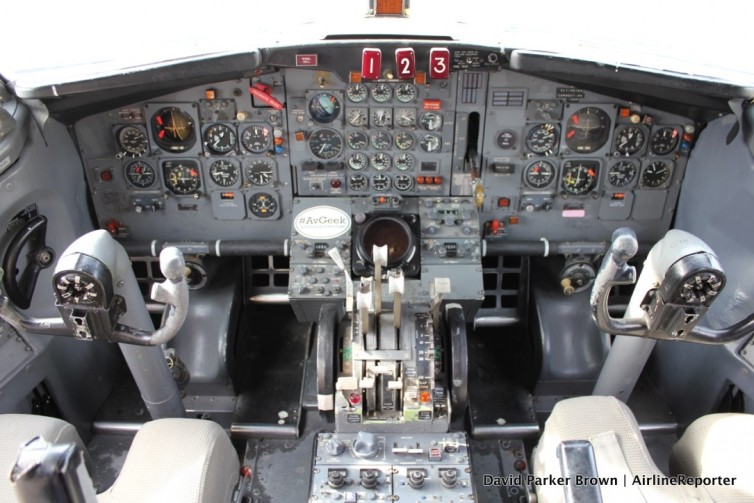
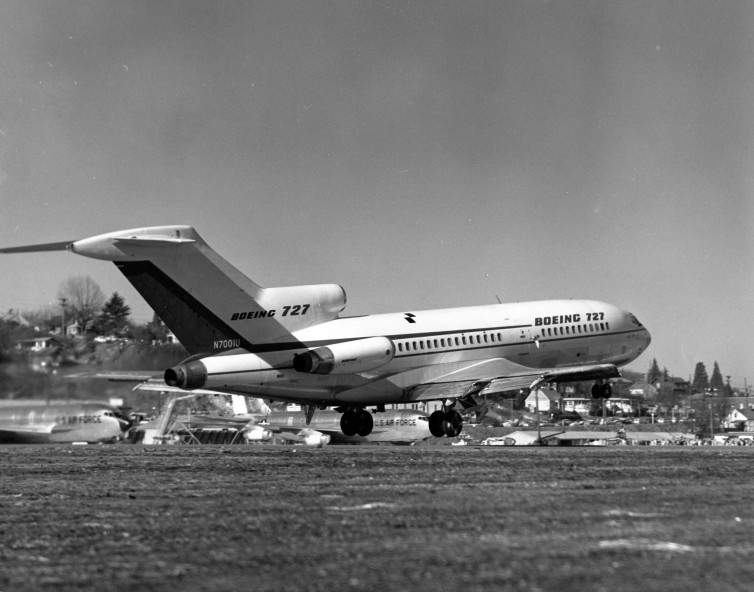
Another great article. This question in somewhat off topic. Noticed that aircraft livery going back 20 years or so had most planes marked with a “black nose” / randome. Was this just a trend back in the day or did it actually serve a practical purpose?
Thanks!
Hey Mike,
That is a good question. I am not 100% sure, but hoping that maybe one of the other readers can say. I know the black on the top of the dome was to reduce sun glare and not sure if it was just easier to paint the whole thing.
David | AirlineReporter
Tuve la oportunidad de volar el Boeing 727-100 y 200 tanto en SAM, como en Avianca, de manera que abone mas de 7000 horas de vuelo en esta poderosa aeronave, de gratos recuerdos en todas las actividades del aire.
I flew the 737 for nearly 30 years. The 737 and 727 predecessor had the same cockpit as the latter 707s. The nose was essentially the same for all three planes from the rear of the radome (start of the aluminum) to a point just behind the center console. I believe there were slight differences in the radomes between the aircraft models.
As far as the radome, the all-black radome on the Alaska jet pictured was probably a replacement radome for one that had been damaged. Radomes depending on livery usually have to be painted on the aircraft to get the lines perfect. That means down time, which equates to lost money. When a radome is replaced due to damage, often they will wait until the jet goes into maintenance for a few days to get the radome painted. The outer skin of the radome is flexible plastic with a fiberglass reinforced structure underneath. I smacked a huge snow goose on final to SeaTac one winter and the radome folded half in. There was no damage to the outer material and they sent it off to a guy who does the fiberglass repair in a mold. Lots of these guys are surfboard builders!
As far as the paint on the nose, you can only see a very short distance past the wiper blades. Reflection is not really an issue. My company painted the cowl black for a few years but eventually did away with it because it really aged fast at altitude. If I could post a picture here, I could show you but, unfortunately, I can’t.
As for the pinpoint black nose, that was for the very early radomes and I am not sure whether it had to do with the radar burning the older paints off or the older paints not sticking as well to the fiberglass. Hopefully, someone else can answer that one. The modern water-based paints are horrible and peel like crazy, especially in light hail or heavy rain.
Will there be passengers able to ride. I would love to be on the last flight
Unfortunately, the only people that will be allowed on the plane are the pilots.
David | AirlineReporter
Dang. I wanted to be part of history.
Sent from Nathaniel Q. Thomas School iPad mini
Well… there will be opportunities at Paine Field (where it will take off) and Boeing Field (where it will land) to watch the history take place. Not as cool being on it, but still pretty darn cool.
Do not worry, AirlineReporter will be covering both!
David | AirlineReporter
My Father in law, flew that plane and talks about it with such fondness – he went on to Captain 777’s for United. When they retired the 727 the Flight Deck guys weren’t permitted to sign anything visible so he signed the back of the compass card. He would have made a great Captain with Emirates 🙂